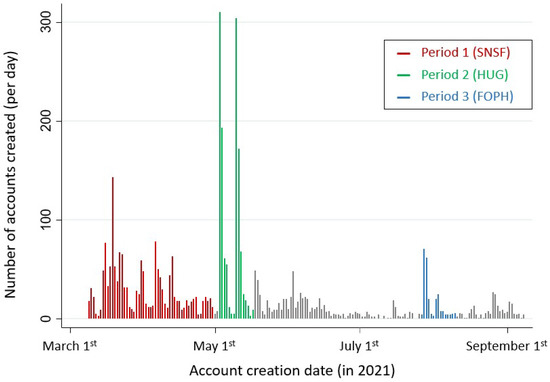Suppan M, Stuby L, Fehlmann CA, Abbas M, Achab S, Harbarth S, Suppan L. The Impact of Three Communication Channels on the Dissemination of a Serious Game Designed to Enhance COVID-19 Prevention. Int J Environ Res Public Health. 2022 Aug 16;19(16):10143. doi: 10.3390/ijerph191610143. PMID: 36011774; PMCID: PMC9408446.
URL: https://www.mdpi.com/1660-4601/19/16/10143
DOI: 10.3390/ijerph191610143
The Impact of Three Communication Channels on the Dissemination of a Serious Game Designed to Enhance COVID-19 Prevention
 Infection prevention interventions can only be effective if they are both well known and easily accessible. A randomized controlled trial showed that a serious game, “Escape COVID-19”, was significantly more effective at improving the intention of adopting adequate infection prevention behavior than regular guidelines among long-term care facility employees. However, less than a fifth of all potential participants were finally recruited in this study. To determine whether a specific communication intervention was more effective than another, we carried out a retrospective analysis of account creation data over a six-month period. During the first period (53 days), information about the serious game was disseminated by a part-time worker. The second period (15 days) corresponded to a press release, while the third period (15 days) reflected an official communication from the Swiss Federal Office of Public Health. A total of 3995 accounts were created during the study period. Most accounts were created by health care workers (2699/3995, 67.6%). Median daily account creation was highest during the press release period (25; Q1:Q3 9:172) and lowest during the official communication period (6; Q1:Q3 4:20). The association between communication intervention and account creation was statistically significant both when considering the overall population (p = 0.013) and when only analyzing health care workers (p = 0.036).
Infection prevention interventions can only be effective if they are both well known and easily accessible. A randomized controlled trial showed that a serious game, “Escape COVID-19”, was significantly more effective at improving the intention of adopting adequate infection prevention behavior than regular guidelines among long-term care facility employees. However, less than a fifth of all potential participants were finally recruited in this study. To determine whether a specific communication intervention was more effective than another, we carried out a retrospective analysis of account creation data over a six-month period. During the first period (53 days), information about the serious game was disseminated by a part-time worker. The second period (15 days) corresponded to a press release, while the third period (15 days) reflected an official communication from the Swiss Federal Office of Public Health. A total of 3995 accounts were created during the study period. Most accounts were created by health care workers (2699/3995, 67.6%). Median daily account creation was highest during the press release period (25; Q1:Q3 9:172) and lowest during the official communication period (6; Q1:Q3 4:20). The association between communication intervention and account creation was statistically significant both when considering the overall population (p = 0.013) and when only analyzing health care workers (p = 0.036).
Published in the International Journal of Environmental Research and Public Health 2022 Aug 16;19(16):10143. - doi:10.3390/ijerph191610143